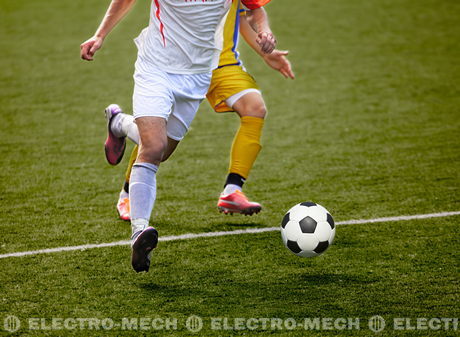
In Soccer Scoreboards news, we look at the moves being made to bring goal-line technology to soccer.
For decades the debate has raged in soccer circles about goal-line technology. The World Cup of 2010 was particularly controversial with more than one incident involving close goal-line calls. For example, with the soccer scoreboards showing 2-1 to Germany, England scored a goal as the referee deemed that it had not crossed the line, when replays clearly showed that the goal should have stood.
From time to time this issue has cropped up in the Premier League in England. For instance, in 2005 Manchester United played Tottenham, and a long range shot was caught by the Manchester keeper, but he then dropped it at least a full meter over the line before clawing it away. The goal was not given as the referee deemed that the ball had not crossed the line. After this moment the debate arose again about goal-line technology.
FIFA has asked 17 companies to tender for the right to supply the organization with goal-line technology that would enable referees to instantly determine whether a goal was scored or not. This could be done, for example, by transmitting a signal to the device on the referee’s watch.
Technology has been successfully implemented in recent years in sports such as tennis and rugby, but FIFA had previously remained resistant to the idea, as it could disrupt the free-flowing nature of the game. The president Sep Blatter said this summer that one problem is that they still do not have a sufficiently accurate and simple system for use in professional matches.
One system that was tested had a microchip embedded into the ball, which would send a signal when the ball crossed the line. The tests, which were carried out at the Under-17 World Cup in Peru, did not lead to any further action however, as the system was deemed to be only 95% accurate. In March 2010, this technology was ditched for good at a meeting of the International Football Association Board. However, out of 50 players in the Europa League who were recently polled on the subject. 90% were for goal-line technology.
One system under proposal is the hawk-eye technology, which is already being used in tennis, cricket and snooker. The proposal would put six cameras at each end of the field which would use the principle of triangulation to determine exactly where the ball is at any one time. This system would cost around $350,000 per stadium. The system is not real time, and the referee has to stop everything to make the review, something which critics have pounced on as a big disadvantage. At least with the microchip system the result was instant.
Nothing is certain as yet, but one way or another it looks like at some point in the not too distant future that goal-line technology will finally come to the game of soccer.
For more information, go to: en.wikipedia.org
